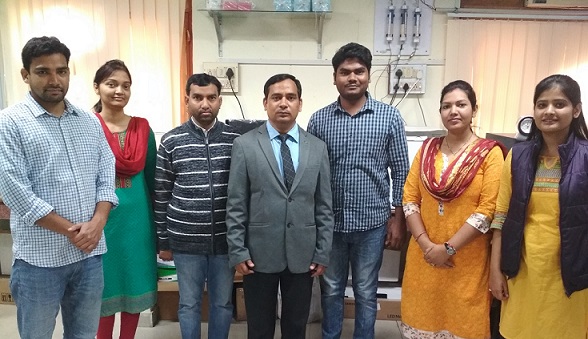Antibiotic resistant bacteria found in stretches of river Ganga

By Dr. Aditi Jain republishing by neucradhealth, March 24, 2019
Antibiotic resistance appears to be spreading in the environment. A new study has found a large number of bacteria which are resistant to commonly used antibiotics in stretches of river Ganga.
Residues of antibiotics reach water bodies through waste discharged from households, drug manufacturing units, hospitals and poultry industry where antibiotics are used in feed. These antibiotics in water lead to evolution of bacteria that are resistant to antibiotics, which then grow in numbers and spread in the environment. The situation could pose a danger to human health as infection with such kind of resistant bacteria could become untreatable.
The new study, done by researchers from the Banaras Hindu University (BHU), has found presence of antibiotic as well as and metal resistant bacteria in river Ganga. Researchers collected water and sediment samples from five river banks – Assi, Bhadaini, Harishchandra Dr. Rajendra Prasad and Rajghat. The DNA was extracted from these samples and subjected to a high throughput technique to sequence DNA of all bacteria present in the samples.
A comparison of this information with existing sequences of antibiotic and metal resistance genes showed that bacteria resistant to antibiotics like beta-lactam, multidrug/efflux and elfamycin are highly abundant in the river water. At the same time, bacteria resilient to a range of commonly used antibiotics were also present in water samples.

” Varanasi region receives over 309.8 million liters of treated and untreated domestic waste daily by various point and non-point sources, which may be contributing to accumulation of resistant genes in the environment ” :Dr. Suresh Kumar Dubey
In the case of metals, bacteria had genes resistant to ions of silver, copper, iron, chromium, arsenic and zinc. “This study suggests that antibiotics and metals are the driving force for the emergence of resistance genes, and their subsequent propagation and accumulation in the environmental bacteria,” researchers have pointed out.
“Varanasi region receives over 309.8 million liters of treated and untreated domestic waste daily by various point and non-point sources, which may be contributing to accumulation of resistant genes in the environment,” explained Dr. Suresh Kumar Dubey, professor at Molecular Ecology Laboratory, Centre of Advanced Study in Botany at BHU and author of the study.
The results of this study, he said, will be useful to regulatory agencies like state and central pollution control boards in making policy change to enforce pollution control regulation to stop further input of antibiotics and toxic metals in the river through domestic, hospital and industrial wastewater.
The study was done by Dr. Bhaskar Reddy and Dr. S. K Dubey with support from the Department of Science and Technology (DST) and the Science and Engineering Board (SERB). The study results have been published in journal Environmental Pollution.
News and image source: India Science Wire








